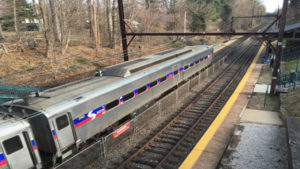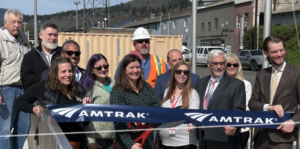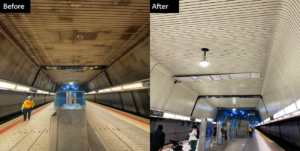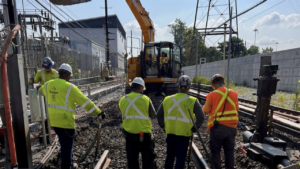MTA marks centennial anniversary of Fourth Avenue Line
Written by Jenifer Nunez, assistant editorNew York's Metropolitan Transportation Authority (MTA) marked the centennial anniversary of the Fourth Avenue Line, which the Brooklyn Rapid Transit Company (eventually the Brooklyn-Manhattan Transit Corporation or BMT) originally opened on June 22, 1915, to shuttle riders between Manhattan and Coney Island.
“The BMT was the standard setter in several areas including propulsion, braking, car coupling and door control. The IND system owes much to the BMT as does the rest of our current New York City subway operation,” New York City Transit President Carmen Bianco said. “The BMT was an innovator in the design of its rolling stock with the introduction of several experimental subway trains that featured open gangways, articulation and stainless steel construction. Today, we celebrate the originality, innovation and creativity of the BMT. The company’s illustrious past remains a vital part of New York City Transit.”
“Today, few people could tell you what the BMT is, but they know they can ride the M train from growing Brooklyn neighborhoods to Manhattan tech jobs and they know the L train is the backbone of the boom in Williamsburg, Bushwick and beyond,” said Metropolitan Transportation Authority Chairman and Chief Executive Officer Thomas Prendergast. “But the BMT network has never been more important to the growth and life of New York. That’s why we need to advocate for the funds to support our capital program with state and federal legislators, so that 100 years from now, New Yorkers will be here celebrating the BMT’s 200th anniversary.”
Over the years, additional lines were constructed, lines were connected and the BMT made more of Manhattan and Brooklyn and Queens reachable by subway. The BRT became the BMT in 1923 and, in 1940, became a division in the unified transit system.
Today, the BMT Division operates the former BMT lines as the B, J, M, Z, L and N, R, Q and Franklin Shuttle lines. BMT subway lines were an integral tool in the development of New York City and they remain an essential part of today’s transportation network.





